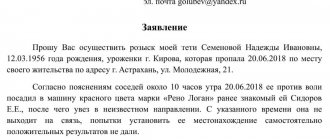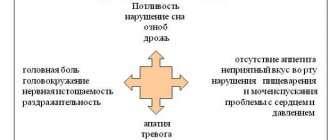Situations often arise when a person is forced to take any action and experiences bullying and torture .
For example, relationships with mentally ill people, criminal elements, and so on contribute to the emergence of danger to human life and health.
How to avoid such influence and what can be done to ensure that it bypasses you? This is what our article is about.
As practice shows, such a crime as torture occurs more and more often every year . This is primarily due to the fact that people thus try to take out their anger on another person, causing him pain and other unpleasant consequences.
What is the article in the Criminal Code of the Russian Federation?
Torture is understood as causing mental , as well as physical and moral .
In addition, torture is characterized by systematic beatings, which are accompanied by various types of torture, threats, some kind of violent manifestations, tying up the victim, and insults.
In addition, the victim is deprived of all kinds of sleep and food.
All this causes moral and mental harm to human health, and the physical impact also affects the health of the victim. Article 117 of the Criminal Code of the Russian Federation is devoted to torture .
What is the torture of Art. 117 of the Criminal Code of the Russian Federation differs from beatings, Art. 116 of the Criminal Code of the Russian Federation?
Torture and beatings are two similar crimes, which even in the Code are given adjacent places. However, these acts are not identical, but have a number of significant differences.
Battery is a less serious crime than torture. The main differences between these two crimes are as follows:
- The beatings are episodic, and the torture is systematic;
- Beatings cause only physical harm to the health of the victim, which is subsequently assessed by a medical expert, while torture causes both physical and moral harm;
- The maximum penalty for beating is 2 years in prison, and for torture a person can go to jail for 7 years;
- The motive for beatings most often lies in hooligan motives, and torture is committed with the aim of deliberately humiliating a person or to satisfy selfish motives;
- During beatings, standard instruments of crime are used - knives, sticks, and during torture, sophisticated ones are used in the form of electric shockers, torture devices, and asphyxiants.
In general, beatings are most often decriminalized and qualified under Art. 6.1.1 Code of Administrative Offenses of the Russian Federation . As a rule, it occurs during family quarrels and domestic conflicts. Much less often, beatings lead to significant harm to a person’s health.
Objective and subjective side
The object of this crime should be understood as life, as well as human health, both physical and moral. The objective side of this crime is quite broad and therefore subject to detailed consideration.
So, in general, the objective side is characterized as the systematic infliction of beatings or the commission of other actions involving violence against a person. The purpose of committing such actions is to bring all kinds of suffering .
Let us divide all the actions committed during torture into two groups. In one there will be mainly actions aimed at beatings . In the other - different.
Let's start with the beatings. Battering in itself is a blow in its plural form. Infliction of beatings is the repeated striking of the victim, or rather, multiple blows , which occur in one single and very short period of time.
If we talk about other actions associated with violence , then they should be understood as:
- pinching – leaving marks on the victim’s body in the form of strong compression of the skin;
- biting – leaving bite marks of varying degrees of strength on the victim’s body;
- section – leaving on the victim’s body traces from rods and other objects intended in this particular case to cause damage to the skin, and therefore section of the skin;
- thermal effects - the use of electrical appliances as torture;
- pricking – impact on the victim’s skin with the aim of leaving puncture wounds;
- deprivation of food and water - actions aimed at depriving the victim of strength and ability to resist the offender.
Subjective side of Art. 117 of the Criminal Code of the Russian Federation , is characterized by direct intent . Thus, we can say that the person knew about the onset of socially dangerous consequences, desired their occurrence and did everything for their occurrence .
The subject of this crime is a person who has reached the age of sixteen, capable and sane.
What is torture?
Art. 117 of the Criminal Code of the Russian Federation in the first part defines the concept of torture.
Torture is the systematic infliction of beatings or other violent actions with the aim of causing physical or mental suffering, if these actions did not lead to consequences in the form of causing serious or moderate harm to health.
Simply put, it is bullying, an act of cruelty towards another person that occurs more than once.
If, nevertheless, as a result of torture, moderate or severe harm to the victim’s health was caused, these actions will be qualified under Art. 111 or art. 112 of the Criminal Code of the Russian Federation.
Actions that fall under the concept of torture must involve repeated or prolonged infliction of pain.
Everyone understands what beatings are, but what the legislator put into the concept of “other violent actions” needs to be deciphered.
So, other violent actions include:
- Section;
- Pinching;
- Biting;
- Blocked breathing;
- Causing small but multiple injuries with sharp or blunt objects;
- Impact of temperature factors;
- Application of electric current;
- Actions of an offensive nature;
- Torture of genital organs;
- Deprivation of food or water, etc.
In a word, torture is various types of torture that actually do not cause tangible harm to a person’s health, but cause him physical or moral suffering.
What is the goal of the torturers?
The goals of the torturers are varied, but they always take place. Without a purpose, simply committing torture will not be qualified under the article “Torture.”
In Art. 117 of the Criminal Code of the Russian Federation, the legislator indicated that torture is committed in order to induce actions contrary to the will of a person.
In case of several episodes of beating of one victim with a significant gap in time, his actions will not be considered systematic torture.
The purpose of torture may be:
- Obtaining certain information (trade secrets, password from a safe deposit box, etc.);
- Extorting a confession of something (stealing money, treason, etc.);
- Compulsion to perform certain actions (signing documents, issuing a passport, etc.);
- Perverted fantasy or sexual dissatisfaction (in the case of genital torture);
- Mental disorders of the criminal.
Often it is mental disorders that become the basis for such behavior. A sick person is not aware of why he should commit torture, but cannot resist the disease.
Criminal legal characteristics
Torture is caused by various factors. They were carefully studied not only by law enforcement officials, but also by scientists and psychologists. Based on the data obtained, the experts came to the following conclusions that the torture was of the following nature:
- Revenge may be the cause of torture. Bullying, for example, an employee at work leads to the person taking out his anger on other people;
- the cause of torture may be a perverted fantasy;
- sexual dissatisfaction;
- mental disorders and deviations, etc.
In any case, such behavior is considered abnormal and requires various types of checks.
Purpose of torture
In order for the actions of a criminal to be qualified specifically under Article 117, he must have goals. Most often, the goal is to induce the victim to take actions that are contrary to his interests and will. In specific situations, these may be different actions. For example:
- Receiving the information;
- Obtaining recognition of committed actions;
- Coercion to sign documents and other actions of this kind;
- Sexual perversion and dissatisfaction;
- Mental disorders of the attacker.
Kinds
The same article of the Criminal Code establishes the types of torture. For example, torture can be carried out against two or more persons . In this case, such a crime will be considered qualified .
In relation to a woman who the offender knew was pregnant . That is, if the offender knew about the pregnancy or saw the belly, the crime is considered qualified . If a woman kept silent about her situation and her sentence was short and the criminal did not guess, the composition will not be considered qualified .
If the crime was committed against a minor, the composition will also be considered qualified.
Another type of torture is the use of torture . Torture is the systematic infliction of pain in order to get what you want.
Carrying out torture not alone, but by an organized group of people is also a qualifying feature of the crime.
Another important feature is the motive of racial, religious and national enmity .
This is unacceptable on the territory of our state, and therefore must be stopped immediately.
Qualification of the composition according to Part 2 of Art. 117 Criminal Code
Circumstances for qualifying the object of criminal episodes of Part 2 of Art. 117 of the Criminal Code of the Russian Federation, when analyzed, is similar to the composition of Articles 111 and 112 of the Code.
Tightens liability for illegal actions expressed in torture, their commission in the following situations:
- Several people were bullied.
- Suffering was inflicted on persons performing labor or public duties.
- The defendant knew his victim was pregnant.
- Torture was used against children, people dependent on the perpetrator of harm, or abducted by him.
- The physical and mental impact was aggravated by torture.
- The torture was carried out by an organized company of criminals.
- The bullying was committed on the basis of national, political or religious hatred.
The presence of aggravating factors leads to only one type of punishment: isolation of the offender from society for a maximum of 7 (seven) years.
The victim’s dependence on the torturer can be expressed in the following forms:
- material;
- official;
- guardianship;
- related.
An addiction of any type must be significant to the victim. A dependent position reduces or completely deprives a person of the ability to resist the actions of a criminal.
Torture of a minor presupposes that the offender knows the approximate age of his victim. If the appearance of the victim does not allow one to determine his true age, then the charge under paragraph “d” of Part 2 of Article 117 of the Criminal Code of the Russian Federation is excluded from aggravating circumstances. In this case, the judicial authorities are guided by the explanations of the Resolution of the Plenum of the Supreme Court of the Russian Federation dated December 4, 2014 No. 16.
Qualification
Torture can be classified as a serious crime and there are reasons for this. Firstly, torture can be qualified as causing grievous bodily harm to a citizen. Agree, that’s why the sanctions for such a crime are justifiably high .
Also, torture not only causes grievous harm, but can also result in death through negligence . Torture is also qualified as a crime directed against the moral and mental health of a citizen.
Taken together, all these factors indicate that the inevitability of sanctions for such crimes is guaranteed.
Corpus delicti
The crime of torture consists of an attack on the safety, health (including the psychological state) and freedom of a person.
Object and objective side
The object, therefore, is public safety, freedom and health of the victim.
The objective side is the methods by which the crime was committed. As a rule, these are various instruments of crime - furniture legs, electrical appliances, strangulation cords, etc.
Subject and subjective side
Subject is any person who has reached the age of 16 and is recognized as legally competent.
Have a question for a lawyer? Ask now, call and get a free consultation from leading lawyers in your city. We will answer your questions quickly and try to help with your specific case.
Telephone in Moscow and the Moscow region: +7
Phone in St. Petersburg and Leningrad region: +7
Free hotline throughout Russia: 8 (800) 301-39-20
The subjective side is the motives of the criminal. They can be very diverse:
- Sexual deviations and mental disorders;
- Beliefs;
- Conflicts in the family;
- Selfish goals.
It is the moral aspect of torture that is the reason for classifying it as a serious crime. This is due to the fact that often due to moral humiliation, the victim becomes dependent on alcohol, drugs and commits suicide.
Criminal liability
Since torture is by its nature a serious crime, the sanctions imposed are not the most favorable . Thus, for the acts provided for in part one, it is necessary to impose a punishment in the form of restriction of freedom for a term of up to three years, in general.
If the crime has qualifying characteristics , then the punishment will be appropriate.
Thus, the term of imprisonment will vary from three to seven years .
Article 117. Torture
- home
- Laws and regulations
- Criminal Code of the Russian Federation
- Article 117. Torture
1. Infliction of physical or mental suffering through systematic beatings or other violent actions, if this does not entail the consequences specified in Articles 111 and 112 of this Code,
is punishable by restriction of freedom for a term of up to three years, or forced labor for a term of up to three years, or imprisonment for the same period.
2. The same act committed:
a) in relation to two or more persons;
b) in relation to a person or his relatives in connection with the performance of official activities by this person or the performance of public duty;
c) in relation to a woman who is known to the perpetrator to be pregnant;
d) in relation to a person who is known to be a minor or a person who is known to be in a helpless state or in financial or other dependence on the offender, as well as a person who has been kidnapped or taken as a hostage;
e) using torture;
f) by a group of persons, a group of persons by prior conspiracy or an organized group;
g) for hire;
h) for reasons of political, ideological, racial, national or religious hatred or enmity, or for reasons of hatred or enmity towards any social group, -
shall be punished by imprisonment for a term of three to seven years.
Note. Torture in this article and other articles of this Code is understood as the infliction of physical or mental suffering for the purpose of forcing testimony or other actions contrary to the will of a person, as well as for the purpose of punishment or other purposes (note introduced by Federal Law of December 8, 2003 No. N 162-FZ - Collection of Legislation of the Russian Federation, 2003, N 50, Article 4848).
Commentary on Article 117
Features of the object
and the victim as part of the torture are identical to the above-mentioned signs of the main element of causing grievous bodily harm (see commentary to Article 111 of the Criminal Code of the Russian Federation).
In accordance with the law, torture is the infliction of physical or mental suffering through systematic beatings or other violent actions. This definition allows us to solve the problem of distinguishing this crime from beatings, classified according to the rules of multiple crimes, from beatings as a continuing crime, as well as from causing serious or moderate harm to health, committed with particular cruelty, torture or mockery.
Objective side
Torture is expressed by an act in the form of active actions, a consequence in the form of physical or mental suffering of the victim and a causal relationship between them.
The law, as part of the crime, indicates two alternative actions: a) systematic beatings and b) other violent actions (on the concept of beatings and other violent actions, see the commentary to Article 116 of the Criminal Code of the Russian Federation).
Systematicity as a sign of beatings as part of torture has quantitative and qualitative characteristics.
Other violent actions can be expressed in pulling out hair, prolonged infliction of pain by pinching, cutting, causing multiple, including small, injuries with blunt or sharp objects, exposure to thermal factors and other similar actions. These actions can be either systematic or unsystematic; in the latter case, they represent a single continuous process that causes special torment and suffering to the victim. It seems that the concept of “other violent actions” can cover not only physical or other impact on the body of the victim, but also informational impact on his psyche that is in the nature of violence, for example, systematic threats, insults, bullying, if they reflect the intention of the perpetrator to cause mental harm to the victim suffering.
Systematic beatings or other violent actions are assessed as torture provided they entail consequences in the form of physical or mental suffering. This is an evaluative criterion that is established on the basis of the entirety of the data in the case. Suffering is, first of all, physical pain or mental trauma, which is deep in nature, causing the victim torment and special experiences. They are associated not only with the experience of pain at the time of the perpetrator’s actions, but also with the emergence of a feeling of uncertainty and fear for one’s future, a feeling of the inevitability of repeated violence on the part of the perpetrator.
It is important that torture is not a special type of harm to health, and therefore establishing that the actions of the perpetrator were in the nature of torture falls within the competence of the law enforcement officer, and not the forensic expert. The latter states only the nature of the damage and the extent of harm caused to health. The legislator directly indicates the maximum permissible amount of harm caused to the health of the victim as part of torture - minor harm. Infliction of moderate or serious harm to health in the process of torture goes beyond the scope of the crime provided for in Art. 117 of the Criminal Code of the Russian Federation, and requires qualification in the relevant part of Art. Art. 112 and 111 of the Criminal Code of the Russian Federation, taking into account the qualifying feature “special cruelty”. Suicide of the victim is excluded from the consequences as a sign of torture; unqualified torture, as a result of which the victim commits suicide or attempted suicide, is qualified under Art. 110 of the Criminal Code of the Russian Federation.
From the subjective side
Torture is a crime characterized by direct intent. The perpetrator realizes that by his actions he causes physical or mental suffering to the victim, foresees the inevitability of their occurrence as a result of systematic beatings or the commission of other violent acts, and desires their infliction.
The motives and purposes of a crime can be different - hatred, revenge, jealousy, etc.
Subject
general crime - a physically sane person who has reached the age of sixteen.
Qualifying signs of torture provided for in paragraphs. “a”, “b”, “c”, “f”, “g”, “h” part 2 of Art. 117 of the Criminal Code of the Russian Federation, are similar to the corresponding signs of murder. In addition, the law recognizes as qualified elements of torture torture against a known minor or a person who is financially or otherwise dependent on the victim (clause “d”, part 2 of Article 117 of the Criminal Code of the Russian Federation), torture with the use of torture (clause “d” Part 2 of Article 117 of the Criminal Code of the Russian Federation).
Torture against a known minor presupposes that the actions of the perpetrator are directed against a person who has not reached the age of eighteen at the time of the commission of the crime, provided that the subject reliably knows about the age of the victim (for example, due to the fact that he is a relative, acquaintance, neighbor, etc. .) or when the appearance of the victim clearly indicated his age. A conscientious misconception that arises on the basis that the age of the victim is approaching eighteen years of age or, due to acceleration, he looks older than his age, excludes the imputation of this qualifying characteristic to the guilty person <1>.
———————————
<1> By analogy with the recommendations of the Plenum of the Supreme Court of the Russian Federation, given in paragraph 14 of Resolution No. 11 of June 15, 2004 “On judicial practice in cases of crimes provided for in Articles 131 and 132 of the Criminal Code of the Russian Federation.”
Torture against a dependent person presupposes that there is a relationship of financial or other dependence between the perpetrator and the victim. Financial dependence should be understood as situations where the victim is dependent on the perpetrator or receives significant material support from him (for example, the dependence of disabled parents on able-bodied children or a disabled spouse on their second, etc.) is material. Another dependence may have various bases: dependence of a subordinate on a superior, dependence of a person in slavery or servitude, dependence arising from the fact of cohabitation, etc. The perpetrator is aware of the fact of this dependence and often motivates his behavior with it.
Torture with the use of torture presupposes, in accordance with the note to Art. 117 of the Criminal Code of the Russian Federation, that the infliction of physical or moral suffering on the victim is carried out in order to force him to give testimony or other actions contrary to the will of a person, as well as for the purpose of punishment or for other purposes <1>. It seems that the peculiarity of torture does not lie in the nature of the subject’s actions, which, in their objective characteristics, do not differ from the torture provided for in Part 1 of Art. 117 of the Criminal Code of the Russian Federation <2>. Its specificity lies in the content of guilt. An obligatory feature of the subjective side of torture is the goal: obtaining certain information (including testimony), punishment, coercion to some action. An act can be qualified as torture both in the case when the perpetrator seeks to achieve his goal through the actions of the victim himself, and in the case when he expects him to receive information or perform an action from third parties. Subject of torture in Part 2 of Art. 117 of the Criminal Code of the Russian Federation - general. The law also establishes liability for special elements of torture (Part 2 of Article 127.2 of the Criminal Code of the Russian Federation, Part 2 of Article 302 of the Criminal Code of the Russian Federation). Possible competition due to the requirements of Part 3 of Art. 17 of the Criminal Code of the Russian Federation is resolved in favor of a special norm.
———————————
<1> It should be recognized that there is a certain discrepancy between the concept of torture in national and international law. According to Art. 1 of the Convention against Torture and Other Cruel, Inhuman or Degrading Treatment or Punishment (December 10, 1984), torture means “any act by which severe pain or suffering, physical or mental, is intentionally inflicted on a person in order to obtain from him or her information or confession from a third person, to punish him for an act which he or a third person has committed or is suspected of having committed, or to intimidate or coerce him or a third person, or for any reason based on discrimination of any nature, when such pain or suffering is inflicted by or at the instigation of a public official or other person acting in an official capacity or with his knowledge or acquiescence.”
ConsultantPlus: note.
Commentary on the Criminal Code of the Russian Federation (edited by Yu.I. Skuratov, V.M. Lebedev) is included in the information bank according to the publication - INFRA-M-NORMA, 2000 (third edition, amended and supplemented).
<2> It is erroneous, in our opinion, to assert that torture is a particularly sophisticated means of influencing the body of the victim. See: Commentary on the Criminal Code of the Russian Federation / Under general. ed. Yu.I. Skuratova, V.M. Lebedeva. M., 1996. P. 269 (author - Professor E.F. Pobegailo).
Difference from beatings
It would seem that two such identical concepts, however, they are not always and not in everything as similar as it seems. For example, beating is expressed in striking and thereby causing physical pain to a person.
Torture is a set of beatings inflicted over a certain period of time with a certain frequency.
Beatings , as a rule, are characterized by the infliction of physical violence , and torture is also characterized by the infliction of mental violence . Beatings are not accompanied by bites, injections, and so on, but torture is complete. This is where all the main differences between torture and beatings end.
Types of torture
There are two main forms of torture:
- Systematic beatings. We can talk about multiple blows if they are delivered more than three times. If this was repeated for several hours, days, weeks or years, then we are talking about torture.
- Other types of violence that can cause suffering to the victim. We are talking about exposure to thermal factors, prolonged deprivation of food or water, sections, causing harm through blunt or sharp objects. In order for an attacker to be punished under Article 117 of the Criminal Code of the Russian Federation, it is necessary to prove the multiplicity of such influences.
An example of torture is also placing the victim in conditions that are harmful to health. Such actions must have intent. Causing harm to health through negligence entails punishment under other articles.
Differences from other acts involving harm to health
Torture may involve inflicting minor, moderate or severe harm to the victim’s health. At the same time, liability under Article 117 of the Criminal Code of the Russian Federation occurs only when multiple injuries are caused through systematic physical force. If we are talking about isolated violence, then administrative liability is provided for light beatings in accordance with Article 6.1.1 of the Code of Administrative Offenses of the Russian Federation.
Also, to establish the fact of torture, it is necessary to establish the fact of direct intent. Causing harm to health is far from the only component of torture. Here the motive, the frequency of actions, and the result are taken into account.
In Russia, noisy neighbors have begun to be prosecuted
Today I want to talk about one unique case in the history of Russian justice - for the first time a person was brought to criminal responsibility for not giving his neighbors peace of mind.
Where it all started
The story began 2 years ago in the city of Novgorod, when a man’s neighbors had a child. The child disturbed the man by allegedly stomping loudly.
After that, he became angry with all the neighbors and their children. The man bought himself equipment for loud sound playback and began playing music loudly day and night, and then sounds.
At first he played classics and rock, but then he started using a recording of a horse neighing, while plugging his ears with earplugs. So for 2 years the man interfered with the quiet life of an entire entrance.
When residents of the house came to talk to him, he reacted aggressively and threatened to go to the police if his health was harmed. Wherever the neighbors wrote complaints and statements and under whatever articles, they all shrugged their shoulders.
The police came, talked to him, drew up a protocol for violating the silence, he received fines, but the man just grinned and threatened that he would harass everyone. The residents even turned to a psychiatric clinic for help, but there was nothing they could do to help.
Contacting the media
And a few months ago, neighbors contacted the local media with their problem. Journalists arrived, filmed a report, and the situation acquired the status of a public outcry.
The police had to intervene, and a few days later an investigative team came to the man along with a capture team.
The investigation opened a criminal case against the restless neighbor under Art. 117 of the Criminal Code of the Russian Federation (“Torture”), which carries a penalty of up to 3 years in prison.
On the same day, the court arrested this citizen and placed him in a temporary detention facility pending trial. The neighbors of this citizen were very happy and grateful that now they can rest peacefully in silence without neighing horses.
- It is not yet clear what decision the court will make, but the fact that he will receive some kind of punishment is one hundred percent.
- If such cases are repeated, then law enforcement agencies will develop a positive practice in this kind of cases and it will be easier to deal with particularly noisy neighbors.
- So if you have similar neighbors who do not allow you to rest peacefully by loudly playing horses neighing or music, you can call the police and show the practice of their Novgorod colleagues.
Motives of the attacker
A criminal may torture a victim for a number of reasons. Among them are:
- personal enmity (revenge, hatred);
- jealousy;
- desire to assert oneself;
- the desire to feel power over the victim, etc.
It is important to trace the cause-and-effect relationship between the attitude of the criminal towards the victim and the actions committed. Moreover, only a person can be a victim under Article 117 of the Criminal Code of the Russian Federation. Cases of cruelty to animals are considered under Article 245 of the Criminal Code of the Russian Federation.
Statement of torture
To initiate a criminal case for torture, a statement from the victim is not required. Law enforcement officers can obtain information about a crime from a number of sources: from documents, photos and videos, and from witnesses. Next, appropriate checks are carried out and a criminal case is initiated.
If illegal acts of a violent nature have been committed against a citizen, he must contact the police department located at the place where the crime was committed. The following types of information transfer are allowed:
- orally during a personal visit to the department;
- in the application (recommended);
- as a result of filling out an electronic form;
- by phone.
If the torture occurred in different places, then you should contact the police department located at the place where the last crime was committed.
The application is written according to a standard format. The document must contain the following information:
- applicant details;
- indication of the addressee (the head of the police department);
- statement of the circumstances of the crime;
- request to conduct a pre-investigation check and bring the culprit to justice;
- reference to notification of liability in the event of filing a knowingly false denunciation;
- signature of the applicant and date of preparation.
Having accepted the application, police officers conduct an investigation. If during the preliminary investigation signs of torture are revealed, a criminal case is opened. If there are no grounds, the applicant is refused.










